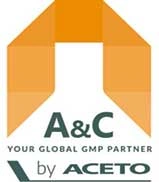What is PEG 400?
PEG 400 is a transparent, colorless, odourless, somewhat viscous, and uncomplicated liquid polyethylene glycol. It is feasible to create a wide range of PEGs with chains that have tens, hundreds, or even thousands of repeating ethylene oxide linkages. One of the shorter polymers is PEG 400, which has a chain length of roughly 8–9 links with a nominal average molecular weight, Mn, of 400. Because of its remarkable solubility of polar APIs (Active Pharmaceutical Ingredients) and low toxicity, it is highly appreciated in pharmaceutical applications.
In general, PEG 400 is thought to be stable, non-reactive, soluble in water in all concentrations, and soluble in acetone, alcohols, benzene, glycerine, glycols, and aromatic hydrocarbons. This adaptable excipient has been used in parenteral, topical, ophthalmic, and oral dosage forms.It is recognized as an efficient solvent or “vehicle” for APIs globally, and the major national pharmacopoeias have monographs on it.
Is PEG 400 of the commercial grade having issues?
Even though they are all thought to be stable, PEGs can all oxidatively degrade (1). Numerous investigations have demonstrated that when these excipients are exposed to air, they will break down via oxidative pathways and generate peroxides. When peroxides are present, they can catalyze the breakdown of PEG, which eventually results in a decrease in viscosity and a gradual increase in acidity. If peroxide and other contaminants are present in the excipient before the medicine is formulated, then these degradation pathways also exist in the absence of oxygen. Drug stability may be negatively impacted by PEG breakdown and contaminants (2). Adverse consequences may arise from the presence of peroxide, aldehyde, residual reactants, moisture, and trace acids. Although the majority of pharmaceutical grade PEGs 400 readily satisfy standard requirements, they can nevertheless include enough minor contaminants in their formulations to cause early medicinal product degradation in dosage forms where PEG 400 is used.
What do the regulators require?
PEG 400 must only be produced using excipient GMP controls that satisfy the local pharmacopoeial standards of the governing monograph specifications, according to regulations in the EU and North America. Allowable amounts of trace contaminants may therefore nevertheless be detrimental to PEG 400, both as an excipient raw material and in medicinal formulations that use it. A highly refined PEG 400 is something to think about for medication formulations that contain extremely sensitive APIs because it can improve drug stability.
A&C manufactures two high purity GMP grades of PEG 400
PEG 400 is produced in two grades by A&C. The first satisfies every GMP and USP-NF standard need. The second is refined even further using a unique method that completely eliminates traces of impurities without changing the composition or purity of the PEG 400. The stability of this refined PEG 400 has been clearly increased, and it is further safeguarded by a nitrogen overlay container closing method that was carefully chosen to preserve the ingredient until it is required.
1.Polyethylene Glycol 400 NF :
- An excipient grade GMP manufactured ingredient complying to IPEC GMP standard
- Meets USP-NF requirements
- Truly GMP and GDP compliant start to finish, full supply chain transparency
2.Polyethylene Glycol 400 Refined Multi-Compendial Low Endotoxin :
- A highly refined grade ingredient that meets the IPEC GMP standard
- Meets USP-NF and Ph. Eur. Compendia
- Trace impurities are exhaustively removed to levels far below requirements leading to enhanced product stability
- BET testing (additional specification)
A&C takes pride in its stringent control measures, as seen by its ISO 9001:2015 and EXCiPACT quality certifications, Drug Establishment license from Health Canada for API manufacture, and frequent audits from both the US FDA and Health Canada.
Because of its reduced contaminants and improved stability, we think you should give our refined product serious consideration if you utilize PEG 400 for pharmaceutical applications involving sensitive APIs.
